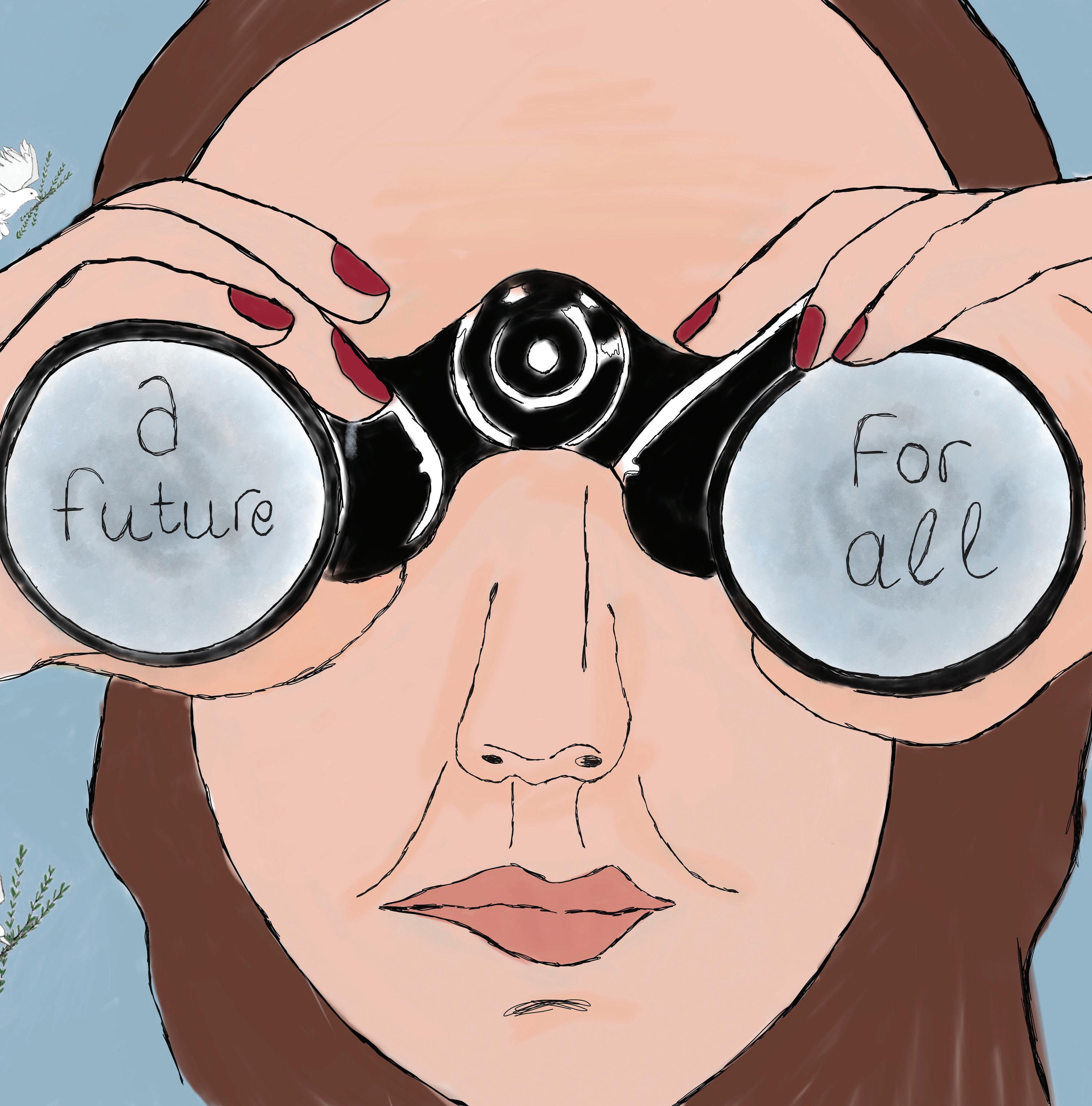
and Inclusion
European
world student christian federation europe region ecumenical journal | issue 38 | 2018
Diversity
from a Youth
Perspective
This issue of Mozaik is produced within the WSCF-Europe Work Plan 2018 “ Humanity Reclaimed: Youth Participation, Inclusion and Development”. The publication is funded with the support received from the European Youth Foundation of the Council of Europe and the Oto per Mille fund (OPM) of the Waldensian Church in Italy. This publication reflects the views only of the author, and the donors cannot be held responsible for any use which may be made of the information contained therein.
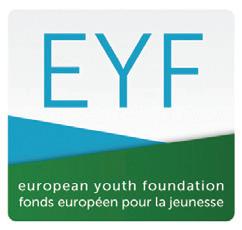
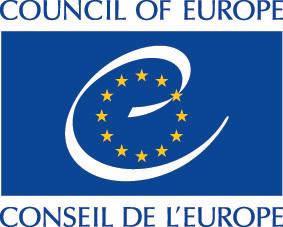
editor-in-chief
Daniel Jara J.
journal editor
Mathew Friesner
art editor
Andrea Franic
illustrators
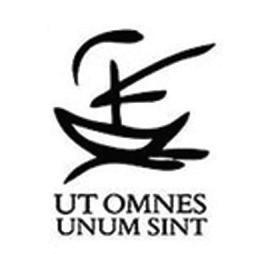
marharyta taraikevich
katerina mavroeidi
photographer
Ana Meladze - Colours of the Life address
wscf Europe
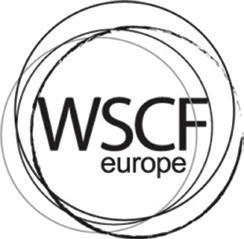
Via Pascoli 11, 38122, Trento, Italy
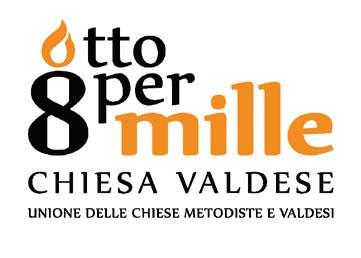
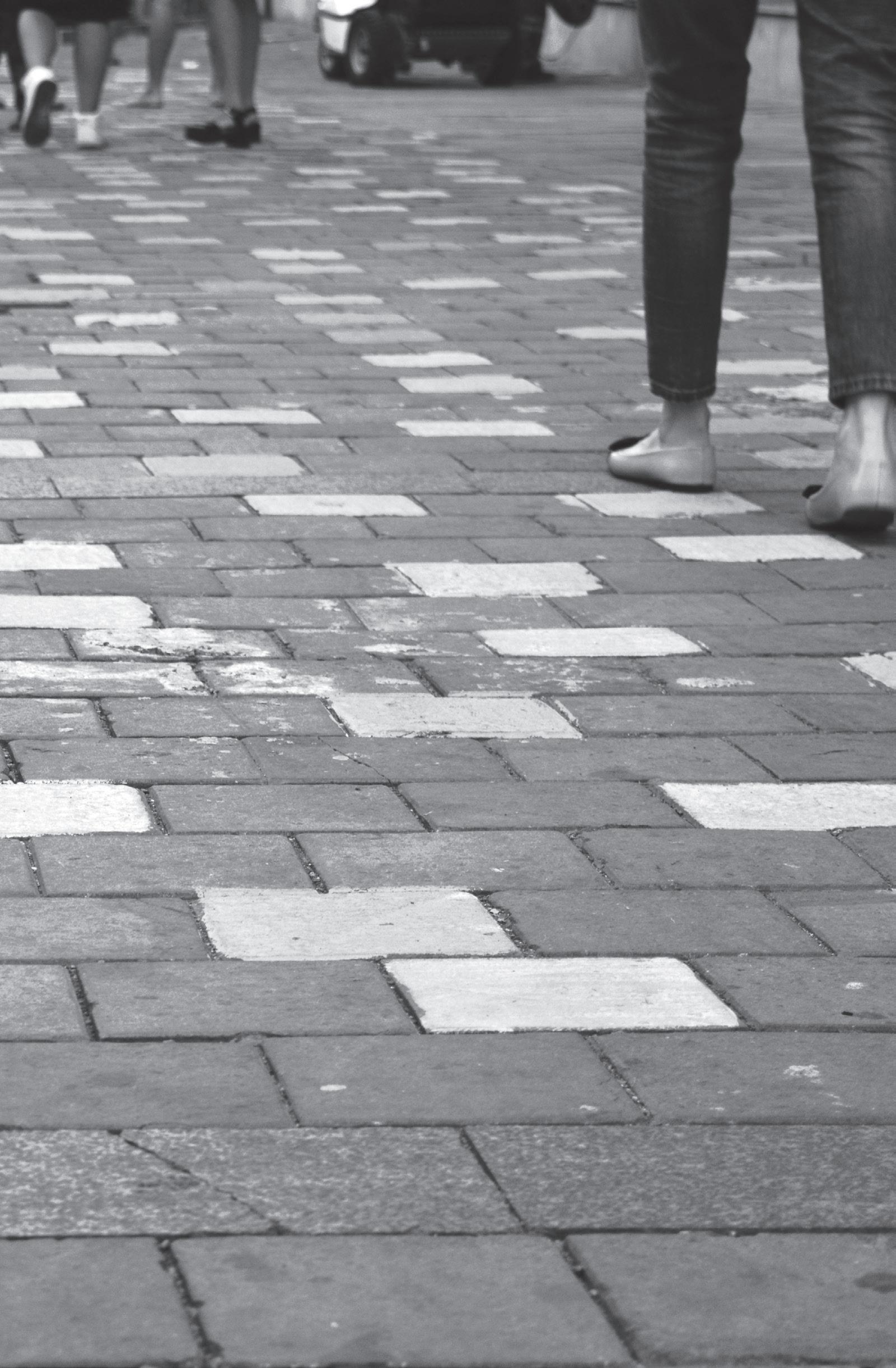
Mozaik Editorial
It is my pleasure to introduce this issue of mozaik as the new Editor-in-Chief of the Journal. At this time we plan to deal with one of the most important topics for Europe’s identity and social cohesion in the 21st century. This is the needed inclusive character that Europe’s multicultural and diverse population requires in order to avoid reckless nationalisms and the mermaid songs that come from some far-right wing ideologies. In this sense, it follows the thematic line of our last issue and its stress on the plight of refugees, migrants, and others who come to make this continent their new homes. Nevertheless, this issue expands its focus in order to be nourished with the experiences and reflections from young Christian students and activists from other regions. As usual, the current issue aims its atention at the reflections from our previous study sessions and conferences, this time in Strasbourg and Thessaloniki.
In the first section entitled Reflecting, the article from Dr. Niki Papageorgiou from the Aristotle University of Thessaloniki ofers an expert and sensible vision on the challenges that migration poses to Christian believers from receiving countries. Ramy’s article displays an overview on Muslim-Christian relations in Egypt during the January Revolution in 2011. Anna shares her reflections on the war through which the eastern provinces of Ukraine have sufered for several years and how it has been re-signified in order to become a unifying factor of her people. Finally, Emad reminds us how deeply embedded are the concepts of diversity and inclusion in our Christian identity.
In the second section designated as Acting, Marharyta from Belarus ofers us insights about her anti-racism activism through art and Facebook. Angelina reflects on the youth struggle against hate and division in post-war Bosnia and Herzegovina, and Katya delves into the challenges that sol-
diers face afer returning from the Donbass batlefield in eastern Ukraine. Finally, Alexandra shares her personal experiences and reflections regarding volunteering with youth refugees on the island of Lesbos. I am personally very proud to credit those who make mozaik such a unique journal with their contributions. Our Journal Editor Mat, our Art-Editor Andrea, our illustrators Marharyta and Katerina, as well as photographers and writers. To all of you: Thank you for dedicating your talent and time to this project.
To close, I want to thank James, our former Editor-in-Chief and to the entire team of the wscf-Europe for your trust and support in order to continue with this great project. In this sense, I am happy to announce that mozaik is starting a process of renovation with the intention to add new media products to our communicative ofer in order to reach a broader audience and promote closer contact with more students from Europe and the entire world.
Blessings,
Daniel Jara J. mozaik Editor-in-Chief
— daniel jara j
Daniel is a theologian and psychologist from Quito, Ecuador. He is interested on the worldwide rich diversity of reflections and practices of the Christian faith and how to make them understandable to each other. He is a movie fan, news consumer, and is beginning in the art of Bonsai.

Mozaik 38
section 1 | reflecting
Reflecting on migration as a Christian–Orthodox believer | Niki Papageorgiou | 6
“Again, the Crescent embraces the Cross on the street”; An overview on MuslimChristian Relations in Egypt during the January Revolution in 2011. | Ramy Hanna | 10
Ukrainian People resisting together: War as an Unexpected Unifying Factor | Anna Lavryk | 15
A Christian Coptic theological reflection on religious inclusion and forgiveness | Emad Atef | 18
section 2 | acting
Anti-racist Activism Through Art and Facebook | Marharyta Taraikevich | 26
Youth Struggle Against Hate and Division in Post-War Bosnia and Herzegovina | Angelikí María Mitsaki | 34
Life 2 .0. War and Peace | Katya Potapenko | 39
Volunteering: A youth tool for inclusion | Alexandra Zosso | 42
Joseph of Arimathea came before Pilate, beseeching him, saying:
“Give me this stranger who from infancy guested in the world as a stranger he cried,
Give me this stranger, whom his own people have hated and slain as a stranger
Give me this stranger, at the side of whose strange death I am estranged Give me this stranger, who gave hospitality to the poor and the stranger”
mozaik 38 I Reflecting I 4
O f ce of the Greek Orthodox Matins of Good Friday.
section 1
Reflecting
Reflecting on migration as a Christian–Orthodox believer | Niki Papageorgiou | 6
“Again, the Crescent embraces the Cross on the street”; An overview on Muslim-Christian Relations in Egypt during the January Revolution in 2011. | Ramy Hanna | 10
Ukrainian People resisting together: War as an Unexpected Unifying Factor | Anna Lavryk | 15
A Christian Coptic theological reflection on religious inclusion and forgiveness | Emad Atef | 18
mozaik 38 I Reflecting I 5
Reflecting on migration as a Christian–Orthodox believer
— dr. niki papageorgiou Assoc. Professor in Sociology of Religion Faculty of Theology – Aristotle University of Thessaloniki
6 Despite the fact that the phenomenon of population movements characterizes many historical periods, migration is related to the birth and function of contemporary industrial society and is connected with the development of capitalism. Nowadays, in the framework of globalized capitalism, the movement of populations is more intensive than in the past. The internationalization of the market and commerce increases the movement of capital, as well as the movement of goods, services and people. On the one hand, the “opening” of borders, and on the other hand the pressure that derives from the environmental and demographic problems of the Developing World, which actually aggravate the problems of underdevelopment, intensify the population movement towards developed countries. In this way, a social diversity is created that may function either as a source of bonds of solidarity and sociability, or may trigger tensions, social exclusions and violations of human rights.
I
Apart from its social dimensions, the treatment of diversity constitutes an important theological issue. The teaching of Church for the human being as “image of God” – based on the first chapters of the Old Testament - may constitute a basis for the discussion in question. The understanding of human being as “image of God” contributes to overcoming barriers and discrimination based on sex, national or social
origin, financial situation or religious faith. The communion of people may rely on this fact that comes as a result of their common origin from God and in accordance to the communion of the three persons of the Holy Trinity.
The theology of person acquires a new dynamic with the incarnation of Christ, which provides new argumentation for the treatment of diversity. The incarnation of Christ meant renovating and saving the whole mankind, thus abolishing discrimination and inequalities. The “other” is considered the person for whom Christ died. The human being is called to imitate God and to cultivate unselfish love towards others.
mozaik 38 I Reflecting
In the New Testament, the parable of the Good Samaritan teaches love for the neighbor who is not identified with people of the same nation, religion, family, or neighborhood, but with the other, the stranger.

The neighbor is not defined by place or relationship but the one whom we approach in love. In this parable, Christ ‘attacks’ the xenophobia of Judaists and at the same time every future xenophobia, as the unexpected help comes from the culturally and religiously other.

Moreover, it is Christ himself who confirmed with the parable of the Last Judgment that our atitude towards strangers constitutes an important criterion of salvation. In this parable Christ himself identifies with the stranger (“I was a stranger and you took care of me’ Mathew 25:35). The Stranger is not the familiar who is easy to face, but the other, the diferent. It is he who difers regarding religion, ideology, color, ethnicity or nationality.
There is a hymn in the Orthodox Church, which is chanted on Holy Friday. In this hymn, the hymnographer sends Joseph of Arimathea to ask for the body of Christ from Pilate with
the repeated phrase “give me this stranger”. In this hymn Christ takes the image of the stranger and actually identifies with every human being that lives in conditions of migration, strangeness, being a refugee, abjection, poverty, etc.
mozaik 38 I Reflecting I 8
“Give me this stranger
Who looks afer the poor and the estranged”
“Give me this stranger
Who as a stranger has no place to stay”
The theology of diversity probably remains theoretically weak and inefective, if it is not supported by actions, which will have as a result the diakonia of the human being, i.e., the migrant. This is the reason why specific interventions on the part of the local Churches are necessary both at discursive and practical levels. The ofcial ecclesiastical discourse may be expressed either at the global, ecumenical level, or even beter at the local one. As for Church’s practices, they may include a variety of activities that refer to the reception and care of migrants.
It is well known that at the ecumenical level the World Council of Churches and the Conference of European Churches systematically deal with the migration issue by organizing special commitees and congresses. Nevertheless, many times the discourse of the Churches at the ecumenical level remains within the conference rooms, in the international forums. Despite the fact that the theological discourse is dynamic and radical, it does not necessarily reach the believers. This situation creates phobias and reflexives, which are not at all Christian, in the daily life exchanges. All these necessitate practices, which will activate the ecclesiastical body towards the acceptance of diversity and the creation of specific actions that will lead to migrants’ integration.
European Churches may and do organize in many cases social services and social networks that help migrants to face the problems of their new life. In Greece, for example, the Greek Orthodox Church, either at the Archiepiscopal level or at the level of local Metropoles, which host a big number of migrants, take initiatives for the help and support of migrants. Help involves food, clothes, necessities, Modern Greek language courses, sometimes even rent payments, for bridging the gap between local owners and migrants.
An important and at many times combative dimension of diversity is the factor of religion, which constitutes an important dimension of the individual and collective identity of migrants. Dialogue and communication, which may be realized either at the level of religious leaders, or that of believers, can break down the conflicting tendencies, appease the militant side of religions and conduce to consensus and exchange. The pursuit of inter-religious dialogue is difcult to achieve a unique truth, as each religion approaches truth in its own way, but can face common problems, which concern every human being regardless of their religion. The demands for peace, social justice or conservation of the environment constitute a common basis for communication and dialogue as people from all over the world share the same needs for life, health and happiness.
In conclusion, “the opening of borders” brought the strangers to our home, to our neighborhood, to our city, to our nation. The strangers live between us, they “question” our internal and external borders and challenge our personal, national, cultural and especially ecclesiastical limits. For this reason we should face migration as a challenge and not as a problem. Migration as a theological challenge is a bet on ourselves and puts to the test the limits of our acceptance of the others.
— niki papageorgiou
Niki Papageorgiou is an Associate Professor of Sociology of Religion and Ethics in the Faculty of Theology of Aristotle University of Thessaloniki. She teaches Sociology of Religion and Christianity, Introduction to Ethics, Religion and Society in the Modern Greece, Religion and Migration. She is VicePresident of the Greek Society of Middle East Studies.

mozaik 38 I Reflecting I 9
“Again, the Crescent embraces the Cross on the street”; An overview on Muslim-Christian Relations in Egypt during the January Revolution in 2011.
The portrait of the crescent embracing the cross was already rooted in the Egyptian sentiment as a symbol of Muslim-Christian unity since the revolution in 1919, when it was represented on a flag during the demonstrations against British colonization. That year was authentically sculpted into contemporary history, when Egyptians from diverse religious groups stood hand by hand on the streets, challenging the colonial power. It also illustrated a conviviality among the religious leaders that positively impacted the grassroots movements in churches and mosques. Abouna Sergius, a Coptic priest, had preached from the pulpit of the famous Al-Azhar mosque, where these speeches lasted for months, confirming that Copts stood in solidarity with their fellow Egyptian Muslims to face British occupation. In her article Vivian Ibrahim stated that all Egyptians groups were together as a cohesive unit. (no. 14 (November 14, 2015Vivian Ibrahim, ‘Beyond the Cross and the Crescent’)
The revolution in 1919 led 800 Egyptians to lose their lives, and although it reaped fruits, it was not promptly. Afer thirty years of British occupation in Egypt, and as World War One started, Britain exploited all the economic and human resources for her military efort. Afer the war came to an end, Saad Zaghloul and his company had travelled to the British Administrator Reginald Wingate, asking him for independence, but they were not even welcomed. So, they started collecting thousands of signatures for Egypt to be represented in the Reconciliation Conference in Paris. The occupation forces had decided to exile Saad and his fellows to Malta. At that point, the first symptoms of the revolution had started; the peasants had cut of the railway roads, the labourers and employees went on strikes, and the schools, universities and Al-Azhar students had marched in massive demonstrations asking for independence or death! The women had also demonstrated before the men, the Copts with the Muslims, al of them as one.
mozaik 38 I Reflecting I 10
— ramy hanna
Until today, the 1919 revolution was an obligatory historical period in the school syllabus that children should pay attention to. Generations were inspired by all those Egyptian, Muslims and Christians and how they had stood together against the foreign British forces that took over our land. This confirmed that the critical situation unveiled what had already existed inside the Egyptian character, that Egyptians profoundly love their neighbours and bravely face enemies without considering any religious sectarianism.

Before displaying the January revolution events, it is important to know that in the collective memory of the Egyptian people, the term ‘Copt’ and ‘Coptic’ always comes to refer to the Egyptian Christians and the church afairs in Egypt. (Magdi Guirguis, ‘The Copts and the Egyptian Revolution’). About the Christians’ presence in Egypt and their situation afer the revolution, Abu-Munshar indicated the following:
“In Egypt, Christians make up 10% of the population, making Egyptian Christians the largest Christian community in the
Arab world. When studying the position taken by Christians in Egypt towards the Egyptian revolution, one sees a clear divergence. Whereas the late Pope Shenouda iii (d. 2012), opposed the revolution, many Christians in Egypt supported and actively took part in it.” (Maher Y. Abu-Munshar, ‘In the Shadow of the ‘Arab Spring’’).
Before the 2011 revolution, many voices had called for a common project that would grant democratic life to Egypt. At that time the hierarchy of the Coptic Christian Church, as all the religious leadership in Egypt, was in partnership with the regime. When the Egyptian revolution erupted, the Egyptian Christians joined together in massive numbers and protested in the streets with their fellow Muslim Egyptians, demanding the removal of the regime. The relation between the church and the government did not forbid the Copts from expressing their rage regarding the oppression and injustice that the nation had experienced during Mubarak’s regime. (Paul S. Rowe, ‘Christian- Muslim Relations in Egypt in the Wake of the Arab Spring’) Although
mozaik 38 I Reflecting I 11
while Mubarak ruled, the church was privileged by expanding her own structure in order to organize the Christian community all over the country, many priests and church leaders had explicitly engaged in the demonstrations.
Various reactions could be observed among the Egyptians during the 18 days of demonstrations, as some had strongly participated, some merely watched, some hesitated or were afraid, and others had actively opposed the revolution. (Guirguis, ‘The Copts and the Egyptian Revolution’).
The nucleus of the 2011 revolution had started by a demonstration that took place in downtown Cairo, where the protesters stood up for the death of the 28-year-old internet activist Khaled Saeed, who was brutally mistreated and murdered by the police in Alexandria in 2010. This early demonstration was chosen to take place on the 25th of January, as it represented the ‘Police Day’ in Egypt, which was considered to be a challenging action towards Mubarak’s regime.
against the system that Mubarak represented…; it was against fostering personal loyalties of public servants at the expense of loyalty to Egypt; it was against a security state that had litle regard for human rights; and it was against rule-for-life by any one individual.” (Elibrachy, ‘An Egyptian View of the Revolution in Egypt’)
Khalid Ali, a political activist, lawyer and one of the famous key figures of the Egyptian revolution, had bullet-pointed nine main signposts that appeared in the political theatre a decade before the revolution and indicated the sufering and oppression that Egyptians experienced during Mubarak’s regime. The highly moving latest two signposts were the death of Khaled Said and the Two Saints Church bombing that killed dozens of people and reopened deep sectarian wounds. (Ali, ‘Precursors of the Egyptian Revolution’)
El-Sheikh Ahmed El-Tayyeb, Grand Imam of Al-Azhar – the oldest historical Islamic university and the highest supreme Islamic Sunni institute in the Islamic world, based in Egypt – had announced on the national Egyptian television through a phone call with the national news program that: “...the continuity of these demonstrations afer the warranties that were announced, is really an invitation to chaos, and it is not possible for such a big and huge country like Egypt to be pushed forward towards such chaos”. Also, the news had explicitly announced that the continuation of recent demonstrations would be ‘religiously forbidden’.
(Carrillo, Welsh & Zaki, ‘The Revolution, New Egypt, and Psychological Sense of Community’).
Bahieldin H.Z. Elibrachy says in his article about the main reason for the revolution: “The 2011 revolution was not merely a revolution against the person of President Mubarak. It was
Similarly, the former Pope of the Coptic Orthodox Church, Shenouda iii, had explicitly declared his condemnation to the demonstrations and his support to President Mubarak. As a result, the Coptic bishops and church leaders had done their best not to let the Christian clergies and Copts to be at Tahrir Square, referring to the critical situation for the future of the church if Mubarak stepped down. This approach directly influenced many Christians, especially clergies that
mozaik 38 I Reflecting I 12
As the Egyptians were sufering from corruption, the tense situation started to develop and was related to low wages and unemployment. T slogan became “bread, freedom and social justice”.
had not shown up by then, and considered the church’s request and Pope’s words, but it didn’t completely forbid the Copts to be strongly presented amid the revolution.
Another key factor was media. In Egypt media highlights whatever it would like to highlight, sometimes according to certain agendas, and other times just by imitating and following bigger media platforms. Most of them do not show another perspective of the story as it may contradict their agenda or oppose the adopted ideology. But there were some scenes that pushed networks to reconsider that the story of the revolution had much more perspectives rather than the one displayed on the media screens. Some of them indicated magnificent scenes that totally contradicted the propagated scenario about the Muslim-Christian relations in Egypt.
For example, churches in Egypt used to have force guards on their doors. If one visits any church in Egypt, this uncommon scene will be one’s first eye-popping image. At the time of the revolution even these guards disappeared! According to the stereotyped ideas regarding the hostility between Muslim and Christians, this would have been a perfect moment for Muslims to atack the churches and destroy the Christian possessions and symbols, and vice versa! But what the scene had illustrated was outstanding; Muslims were protecting the churches from any expected armed atack as if it were their own home, commenting: this is God’s house!
On the other side, another well known scene occurred during the Muslim time of prayer. While Muslim believers were bowing on the floor, Christians were protecting them in the middle of Tahrir Square where a lot of danger surrounded the protesters who were under live fire, tear gas and the injured lay in the so-called ‘field hospitals’.
These words were said by an Egyptian Muslim who was part of a gathering that calls our minds back to the scenes of Egyptian Muslims gathering around Coptic churches afer the brutal terroristic atack that targeted the Saints Church in Alexandria. That atack led to the death of 21 Copts, while Al-Qaeda took responsibility. (Aslan, ‘Christians and Muslims, We Are All Egyptians’)
Does this mean there are no tensions or challenges between the two communities? Does this indicate a just life for Christians in Egypt? That no requirements or objectionable discourses exist? The answer is no! All these exist and more, however, Egyptian Muslims and Christians do not hate each other. We live in the same society that suffers from social, educational and political stress. We all go to the same schools, universities and we work at the Egyptian governmental desks that sufer from lack of vision and bureaucracy. We also claim that we worship the same God; Allah.
Ronald A. Baasten in his article about the Christian-Muslim relations, states: “’Allah’ is simply the Arabic word for ‘God’, in the same way that ‘Theos’ is Greek for ‘God’. Perhaps to clarify we should observe that ‘Allah’ or ‘God’ is not a proper name, but a descriptive term which can be translated, unlike proper names. Christians have for millennia referred to God as ‘Allah’,
mozaik 38 I Reflecting I 13
“Tis is not about us and them. We are one. Tis was an atack on Egypt as a whole, and I am standing with the Copts because the only way things will change in this country is if we come together.”
long even before the emergence of Mohamed, for example the Copts in Egypt who have been around since the first century.”
(Baatsen,‘The Will to Embrace’)
At the time of revolution, the interior forces had disappeared from the country; the police stations were empty, the prisons were opened, all the prisoners were freely moving all around the Egyptian cities where many of them started to commit thef and smuggling among various neighborhoods. Also, some of them did robbed the weapons lef in the police stations! If there were a real profound hostility planted against the other from the early days, if both sides hated and wished to harm each other, the days of revolution would have been the golden days for these deep feelings to rise up to the surface as the power and force were suspended.
The bbc News, while covering the January Revolution in Egypt, reported about the Coptic Christian protesters surrounding their fellow Egyptian brothers and sisters while performing the noon prayers, as a human chain against the internal force atacks.
ofcial announcement of President Mubarak’s resignation. All over the Egyptian cities the nonparticipants waved at their homes, the car drivers honked their horns, and the people on the streets sang songs. The slogans they used to recite and proclaim at the time of the revolution in Tahrir Square were “Muslims, Christians, we are all Egyptians”, and “Christians and Muslims, one hand”. All of this at the time thatEgyptians felt that their chains had dropped from their hands. Now it is the moment to be ourselves -some saidapart from any misuse of a religio-political agenda.
To finish, I would like to repeat the words of the Sheikh from Luxor (the British Museum YouTube channel, ‘Copts and Muslims for a Peaceful Coexistence’), who afrmed that the Egyptians’ authenticity and those real feelings toward one another appeared on the surface during times of distress. The revolution had revealed the power and cohesion of the Egyptian nation, where the crescent embraces the cross on the street.
— ramy hanna
Ramy Hanna is an ecumenical activist who studied Intercultural Theology at Goetingen University. He also represents the Coptic Orthodox Church in wcc Commissions. He is a member of a local scm in Egypt and recently a 'Pilgrimage of Justice and Peace' report group member of wcc.
A shared emotional connection and collective celebratory behavior – not commonly witnessed except at the football games – was strongly experienced on the streets afer the

mozaik 38 I Reflecting I 14
Also, BBC highlighted that the image of the crescent embracing the cross was everywhere at Tahrir Square. Ty were calligraphic handmade charts, which were colored on the floors, drawn on eyeglasses and graffiti pieces.
Ukrainian People resisting together: War as an Unexpected Unifying Factor
Sometimes it happens that due to unforeseen and uncontrollable circumstances people may face problems that radically change their habitual way of life. This may be a natural disaster, war, persecution, and so on. Unfortunately, many Ukrainians have faced a similar condition due to the war situation in the country.
A general characteristic of all the refugees to whom I have spoken and the many friends and colleagues who arrived from Temporarily occupied and uncontrolled territories (the ofcial way of referring to war zones in Ukraine) is that none of them initially planned to leave their homes for such a long period of time. One of them actually planned to move just for a week to a nearby city, while others thought it was safer to stay with relatives in the western Ukrainian territory. But everyone was sure of something. In a week or two everything would be fine and it would be possible to return home. Therefore, people took only the most necessary things with them.
But it turned out that the military conflict has dragged on and has been going on for more than four years now! People had to decide between two difcult options: to stay, despite the danger, in their homes, or to leave the towns or cities of their forefathers. It is understandable that many decided to give up everything and, for the sake of their safety, start a new life in a new city.
mozaik 38 I Reflecting I 15
T military conflict has confronted people with misfortune, and many, trying to save their lives, have lef homes, leaving behind everything that was acquired through hard work, in order to find temporary housing in calmer regions, retaining hope that they would return soon.
— anna lavryk
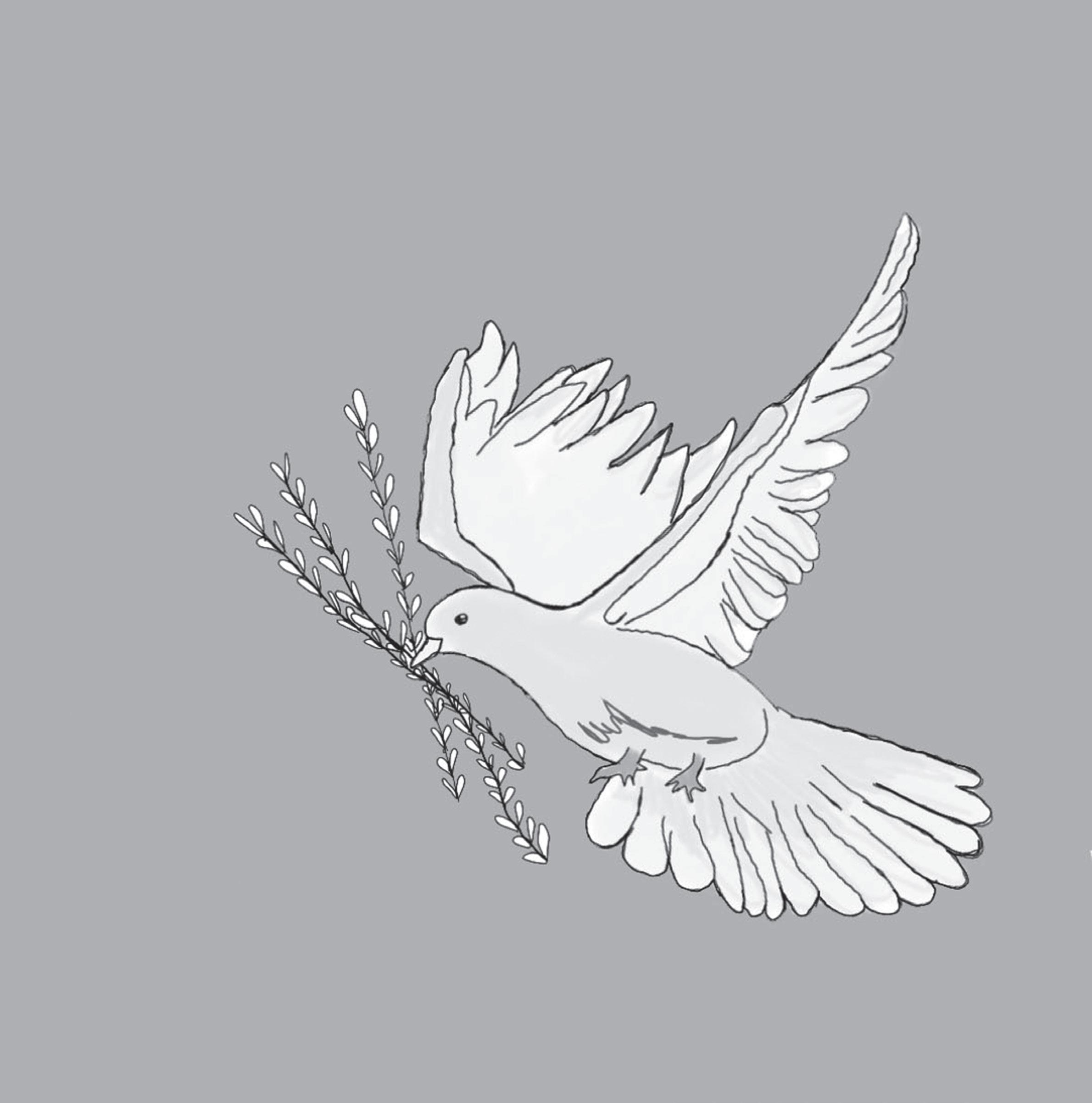
Historically, the populations of Ukraine in the west and the east of the country have had important diferences. First of all, the language. In the territories of the eastern regions, people mostly speak Russian, and in the western territories, Ukrainian. Orthodoxy prevails in Eastern and Central Ukraine, whereas Catholicism prevails in the western side of the country. Furthermore, certain historical issues that divide Ukrainians still remain in our times.
Having talked with refugees of diferent ages and status, I have identified two related difculties that these people face afer leaving their homes: employment and complications to pay rent. Unfortunately, the human factor plays in both aspects. It happens that some employers, because of certain prejudices, do not want to hire the newcomers from Eastern Ukraine. Regarding the rent, the fact that the landlords are not sure of the solvency of the funds of potential renters may lead to refusal.
Nonetheless, I am pleased to state that the above mentioned cases are more the exception than the rule, and that despite the complexity of the political and, as a result, the economic situation in the country, everything that has happened unexpectedly became a social unifying factor. I know of many cases when people from diferent parts of Ukraine ofered free housing for those who could not afford to rent a place right afer they lef their homes. Many of our fellow citizens send money to diferent funds to support those in need. They ofer food, as well as clothes, dishes and everything that might be needed at a new place. All Ukrainians are worried about what is happening all over the country and sincerely empathize with people in such a difcult situation. Afer all, tomorrow any of us could be in their place.
Anna is a social activist, who lives and works in Kyiv. She worked in the international youth organization aiesec and participated for several times in wscf-e events. She is interested in issues of peace, equality and conflict resolution.

mozaik 38 I Reflecting I 17
Tis situation has shown how people can together overcome a great disaster. And this instills our confidence that despite the many adversities we have faced and those which could come in the future, everything in our country will be fine and humanity shall prevail!
— anna lavryk
A Christian Coptic theological reflection on religious inclusion and forgiveness
Being a Coptic Christian living in a country where Christians are a minority is quite challenging. Every day I face many questions. How can I live as a true Christian in this discriminative context? Is diversity a blessing or a curse? How can I be a loving person to every human being even when they could oppress me or discriminate against me? As a theology student I have to answer these questions in a way that is faithful to the Christian teachings. In this article, I will review three theological principles that I believe can help to solve the dilemma between diversity and inclusiveness in modern times.
what is the nature of humanity?
In the Book of Genesis, we read that “God said: Let us make man in our image, afer our likeness; [...] So God created man in His own image, in the image of God He created him, male and female created He them. And God blessed them”
(Gen. 1:26-27, esv Global Study Bible). So, what does this “image and likeness” mean? This is the topic of numberless biblical and theological debates. For me, it refers to the grace of dignity and royalty given to us from the Triune God, regardless of our religion, age, gender, ethnicity, race, sociopolitical views, etc. St. Gregory of Nyssa afrms that humanity is blessed with “royal nature”1, which is a “resemblance to the universal King [i.e. God]”2.
Several early Christians understood the radicalism of this doctrine. St. John Chrysostom described humanity as the “greatest and most marvelous among the living beings and the creation most worthy of honor before God”3. The paradox of this doctrine is that however we can easily notice the
mozaik 38 I Reflecting I 18
of Man 4
of
2 1 — emad atef
1 On Creation
2 (On Creation
Man 4) 3 Sermons on Genesis
deep corruption of humans; we must dig deep inside every human action in order to find the “image and likeness of God” which is buried in everyone. We may even add that the “image and likeness of God” is buried deep inside every thief or murderer, that the image of God in humanity “survives the scars of human sin”4. It might be challenging to articulate the doctrine in this way, but nonetheless, this is the only faithful conclusion drawn from it. Human beings are given dignity by God, regardless of the many results of sin and death. This is a starting point for our anthropological understanding.

who is jesus christ?
The doctrine of the incarnate God is the essence of Christian faith. Various theological debates throughout centuries rose from the same question: who is Jesus Christ? A theological or historical representation of Christ goes beyond the scope and the goal of this article. However, I want to highlight that it is historically accepted by the Christian Tradition that Christ is both God and man, he is the truly God and truly human, as the Gospel of St. John writes: “The Word became flesh” (John 1:14).
This unity between the divine and human natures means not only human dignity’s restoration through the union with the Son of God but also it is the ultimate hope for complete communion of humanity with God, inasmuch as God, through the incarnation of the “Son/Logos”, united humanity with himself5. So, if Christ united human nature to himself in order to restore humanity’s relationship with God, the Father, then it is God’s teaching that every human being is certainly precious regardless their diversity.
4 An introduction to Christian theology, Richard J. Plantinga, Thomas R. Thompson, and Mathew D. Lundberg, P.181 (United Kingdom: Cambridge university press, 5th ed., 2014)
5 I am using “himself” not in a way to priorities one gender on the other, I am using it in the same way as the biblical language in many translations.
mozaik 38 I Reflecting I 19
what do we mean by trinity?
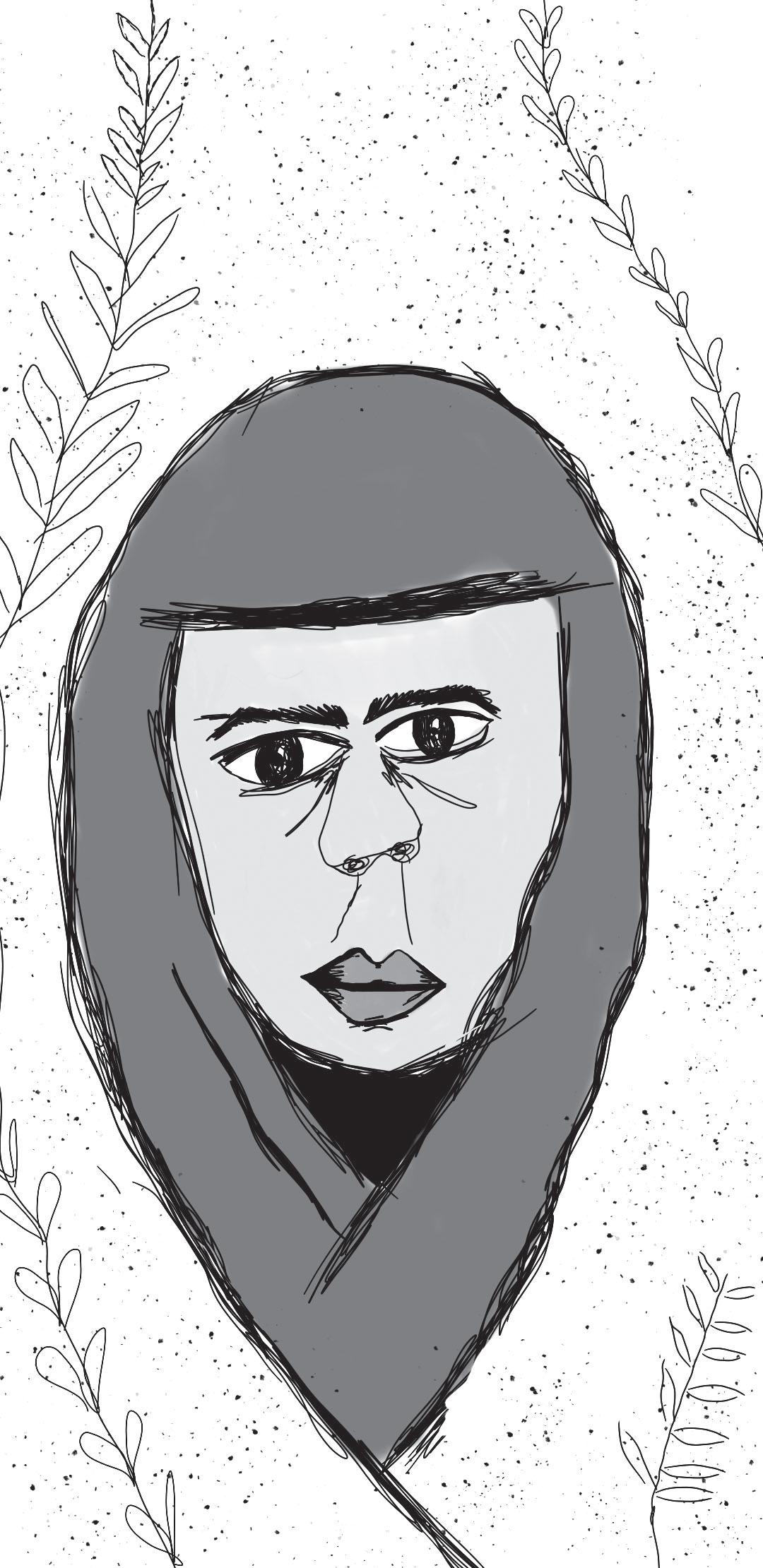
According to the Christian faith God is unique and reveals himself as Triune. God is Father, Son and Holy Spirit. Every person of the Holy Trinity is God Himself, the Father is God, the Son is God, the Holy Spirit is God, and the whole Trinity is one Triune God. They are not three Gods, nor they are three models or manifestations of the same God. They are three persons in one being, they are in mutual indwelling inside each other. The Trinitarian doctrine is paradoxical and radical. Paradoxical, as we are used to understanding unity in an individualistic sense.
Contrary to the individualistic post-modern paradigm, Trinitarian unity is performed in communion and solidarity. According to the doctrine of Trinity, unity is accomplished between diferent persons who share the same being. This doctrine is also radical as it reshapes our view of love and unity. Love is the essence of God (1 John 4:8). Love doesn’t mean to dissolve or to remove the uniqueness of each person, but it presupposes openness to the beloved one without reducing one’s identity, So we can afrm that “love is supremely a predicate of person-in-right-relation”6. As Christians, we believe that “God is like a family, a community or a society of persons”7
Thus, we can conclude that the Trinitarian doctrine is a true model for a love which emphasizes inclusiveness and does not dissolve diferences. It entails loving the other person without trying to remove his identity and peculiarity.
mozaik 38 I Reflecting I 20
6 An introduction to Christian theology, Richard J. Plantinga, Thomas R. Thompson, and Mathew D. Lundberg, P.127 (Cambridge university press: United Kingdom, 5th ed., 2014)
7 An introduction to Christian theology, Richard J. Plantinga, Thomas R. Thompson, and Mathew D. Lundberg, P.138 (United Kingdom: Cambridge university press, 5th ed., 2014)
dealing with human diversity and inclusion
Based on the theological conclusions mentioned above and noticing the diversity in our contemporary world, I argue for the following:
1 The doctrine of “image and likeness of God” can help us to appreciate every human being per se, regardless of his or her diversity in religion, age, gender, ethnicity, race, sociopolitical views, etc. Emil Brunner once said “first of all [humanity] be defined theologically, only then may the philosopher, the psychologist and the biologist make their statement”8. It is our duty as followers of Christ to love and respect every human being.
2. Based on the doctrine of God’s incarnation and the subsequent unity of divine and human natures in Jesus Christ, I believe that humans are invited to be sisters and brothers for Christ, and to look for a beter future for all humanity. This future may be inspired by the graceful incarnational act of Jesus as way of salvation given by God to us.
3. Finally, based on the doctrine of the Trinity, a truly inclusive love must be based on accepting and loving the person by not trying to look for identifying the other with ourselves, but by respecting and promoting his or her personal identity.
a christian coptic response to religious excluding violence
As Gavin D’Costa states: “there is, in efect, no such thing as action without belief”9. So reflecting is both a framework and a catalyst for every ethical and moral action. I assume that these three statements -if understood rightly- summarize most of the Christian message and therefore they can refine any Church’s discourse, regardless of the situation of the believers (i.e., majority or minority).
2014)
On the other hand, this theology will encourage the minority to show Christian values, ethics and morals in the darkest hours of history. A good example of this is the Coptic Orthodox Church in Egypt. Afer the violent dispersal10 of the sitin of the Muslim Brotherhood on August 14, 2011, other radical Islamic movements and pro-Morsi supporters in Rab’a
9 Christianity and World Religions: Disputed Questions in the Theology of Religions, Gavin D’Costa, P. 17-8 (Wiley-Blackwell; 1st ed.,2009)
10 htps://www.hrw.org/news/2013/08/21/egypt-mass-atacks-churches (checked on 1-March-2019)
mozaik 38 I Reflecting I 21
8 An introduction to Christian theology, Richard J. Plantinga, Thomas R. Thompson, and Mathew D. Lundberg, P.181 (United Kingdom: Cambridge university press, 5th ed.,
In a situation where Christians are the majority, an anthropology that is built on the “image and likeness of God” will prevent the Christian majority discourse from any fascism or chauvinism. A true respect for the human being will be always a good starting point, regardless of the difference from the other’s worldview.
al-Adawiya Square atacked “at least 42 churches, burning or damaging 37”11. In addition to these violent actions, there have been atacks on “Christian buildings” and threatening “anonymous phone calls”12. Fortunately, the Coptic churches and Christians did not react violently towards these extremist actions. Instead, we announced forgiveness through the Pope Tawadros ii, who said in a phone call to a talk-show, “if the hand of evil kills, burns and destroys, the hand of God is much greater, and it builds. The commandment of Lord Jesus for us in our Christianity is: love your enemies and pray for those who persecute you (Mathew 2:44)”13 .
To forgive in this situation is quite a radical Christian atitude and challenge, but it reflects the theology that guides the Egyptian Coptic Church based on the teachings of its liturgy. In this sense, it was our liturgy that inspired us in the formulation of every Coptic response to violence.
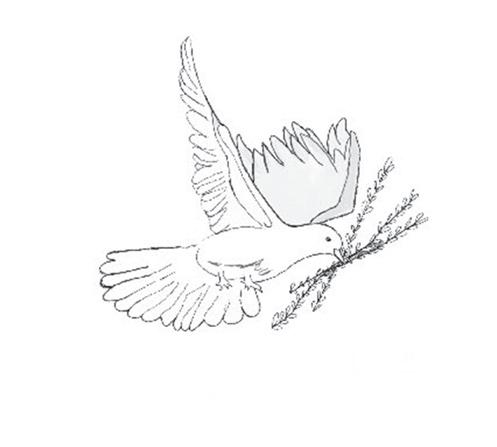
11 Ibid
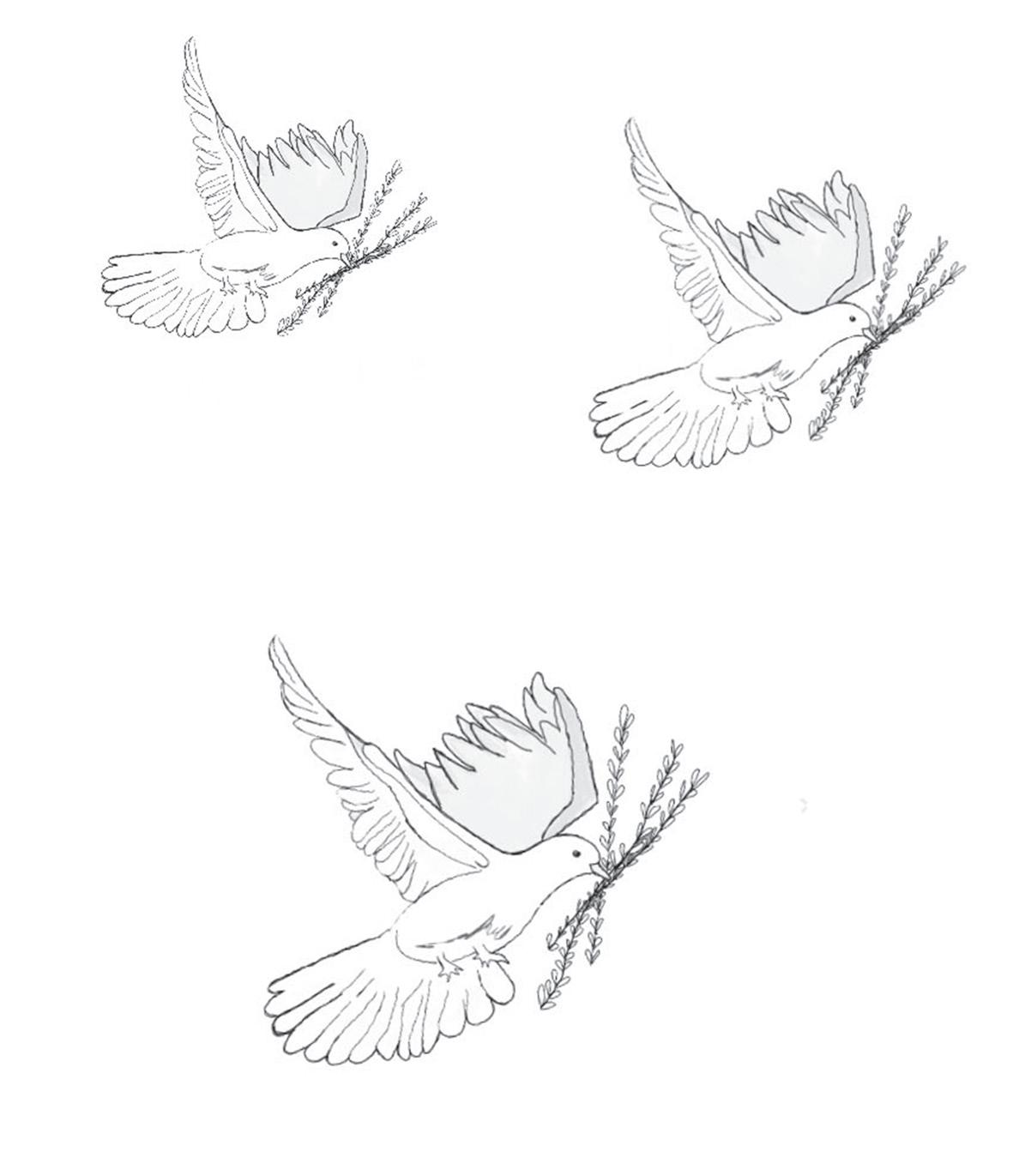
12 Ibid
13 htp://gate.ahram.org.eg/News/383756.aspx (my translation) (checked on 1-March-2019)
— emad atef
Emad is a Mechanical Engineer who is based in Egypt. He holds a Master of Arts in 'Early African Christian Studies', and is doing his second Master of Theology in 'Orthodox Studies'. He is interested in Christian Theology and early Christianity.
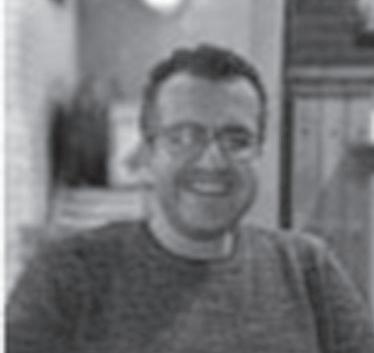
mozaik 38 I Reflecting I 22




















